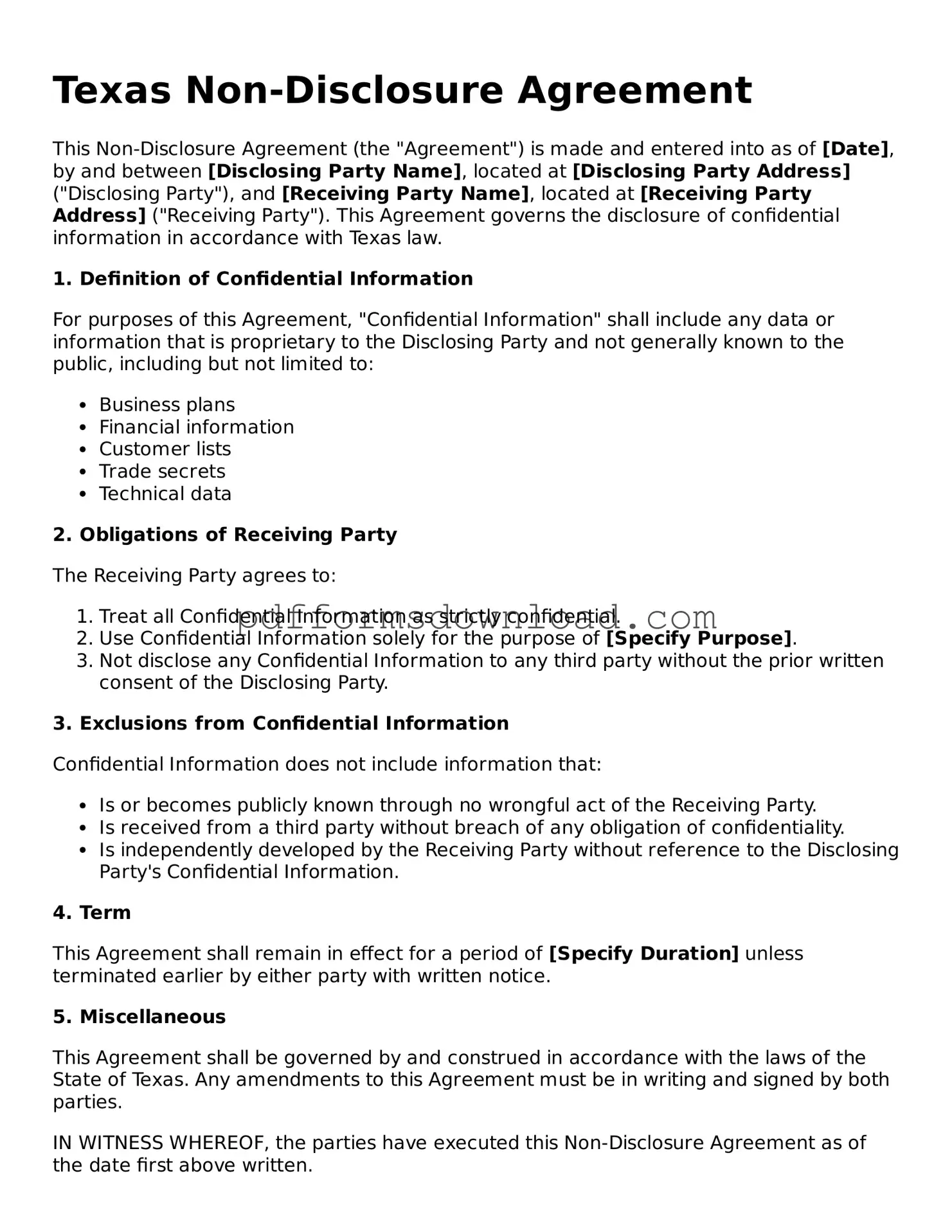What is a Texas Non-disclosure Agreement (NDA)?
A Texas Non-disclosure Agreement is a legal contract that protects confidential information shared between parties. It ensures that the receiving party does not disclose or misuse sensitive information. This agreement is commonly used in business settings, where trade secrets, proprietary information, or sensitive data is exchanged.
When should I use a Texas NDA?
You should use a Texas NDA when you plan to share confidential information with another party. This could be during business negotiations, partnerships, or when discussing potential investments. An NDA helps safeguard your interests and ensures that your information remains private.
What should be included in a Texas NDA?
A Texas NDA should include several key elements. First, it should clearly define what constitutes confidential information. Next, it should outline the obligations of both parties regarding the use and protection of this information. Additionally, the agreement should specify the duration of confidentiality and any exclusions, such as information that is publicly available or independently developed.
How long does a Texas NDA last?
The duration of a Texas NDA can vary based on the agreement between the parties. Typically, confidentiality obligations last for a specified period, often ranging from two to five years. However, some agreements may state that certain information remains confidential indefinitely, particularly if it involves trade secrets.
What happens if a Texas NDA is violated?
If a Texas NDA is violated, the injured party may seek legal remedies. This could include monetary damages or injunctive relief, which is a court order to stop the violating party from further disclosures. It’s important to enforce the terms of the NDA to protect your interests effectively.
